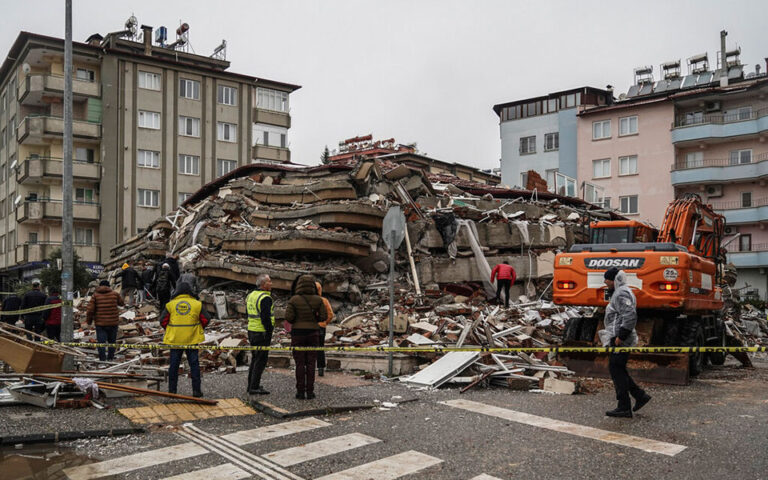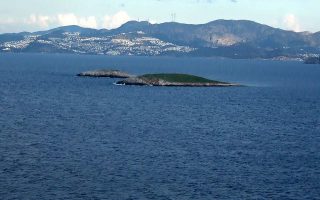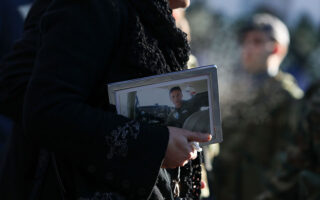With common sense in the application of regulations we would have fewer victims

Monday’s magnitude 7.8 earthquake in Gaziantep, Turkey is the strongest in the Eastern Mediterranean in 100 years. About nine hours later, a second temblor of magnitude 7.5 followed, and there still seem to be opposing views as to whether it was an aftershock or a “new” earthquake. Both earthquakes occurred at a shallow focal depth of about 11 kilometers. The largest earthquake we know of in Turkey from instrumental recordings occurred in 1939. In Greece, the largest earthquake in the last 100 years occurred in Amorgos in 1956, with a magnitude of 7.5.
If one considers that the castle in Gaziantep was built by Justinian, it fell, and was rebuilt reportedly four times, then one can estimate roughly that such large earthquakes may occur every 400 years. The particular fault that ruptured on Monday does not seem to have produced any large earthquakes in at least 120 years, that is in the instrumented period.
In 1999, a magnitude 7.6 earthquake in the Gulf of Izmit just outside Istanbul killed around 18,000 people, and triggered a 2-meter tsunami. I fear that Monday’s earthquakes will have many more victims, and perhaps we may never know the exact number, because entire families have been killed. We already know that about 5,000 houses and apartment buildings have collapsed. Counting on average five persons per dwelling, the numbers become unfathomable. Many thousands of other buildings are no longer habitable.
Most of the videos showing building collapses were filmed during the second earthquake, the largest of which occurred overnight. Both earthquakes point to a major post-seismic sequence, with earthquakes greater than 6.3. Thousands more will be affected.
Crisis management is extremely difficult, the earthquakes have directly affected around 10 million people, with tens of thousands homeless and injured. Search and rescue operations will last for several days, and then we will find the approximate toll. Already, 13,000 rescuers, 315 vehicles and 600 cranes have been deployed. Two large local hospitals have collapsed, while three newer hospitals are operating. It is bitterly cold, and the 20,000 tents already sent are not enough, although I am sure many more will be sent. The situation in Syria maybe much worse than in Turkey, but the political differences between them leave no room for optimism for mutual aid. Worse, at the time of writing, rescuers had not arrived in a few isolated areas.
In survivor videos from Gaziantep, we see neighboring buildings with completely different behavior during the shaking. Consider that the ground accelerations did not reach those of the devastating earthquake in Christchurch, New Zealand in 2011. In Greece, there is a lot of discussion in the media about the quality of construction in the neighboring country, or what appears to be poor design, or failure of materials. Turkey has world-class building codes, which, just as in Greece, were upgraded after the earthquakes of 1999 in Izmit and Athens. Furthermore, the three newest hospitals near the epicenter, built in the last decade, continued operating and were not damaged. In many countries, enforcement of building codes and retrofits is often left to the professionalism of engineers, and the common sense of the owners or buyers – it’s not country specific. I am sure that lessons learned from this event will help improve codes worldwide.
Assuming no substantial differences in soil conditions, the different responses of neighboring buildings remind us of tipping points in man-made and natural systems, such as structures and the climate. When a complex system is driven beyond a tipping point, then the consequences can be quite unpredictable, even more so than the earthquake effects we just experienced. Enforcement of building regulations and educating the public on the perils of living in buildings which may not be upgraded to the latest codes would have perhaps helped to have fewer victims. Common sense and the entire scientific community suggest to us how hard we must work both as a global community and as individuals with our daily choices not to exceed the climate neutrality goal for 2050, as agreed by 196 countries in Paris in 2016. This will help limit the global average temperature rise by 1.5 degrees, and save us from consequences and thousands of times worse than what Gaziantep tragically experienced.
Costas Synolakis is an academician, professor at the Viterbi School of Engineering at the University of Southern California and chair of the Greek National Committee on Climate Change.



